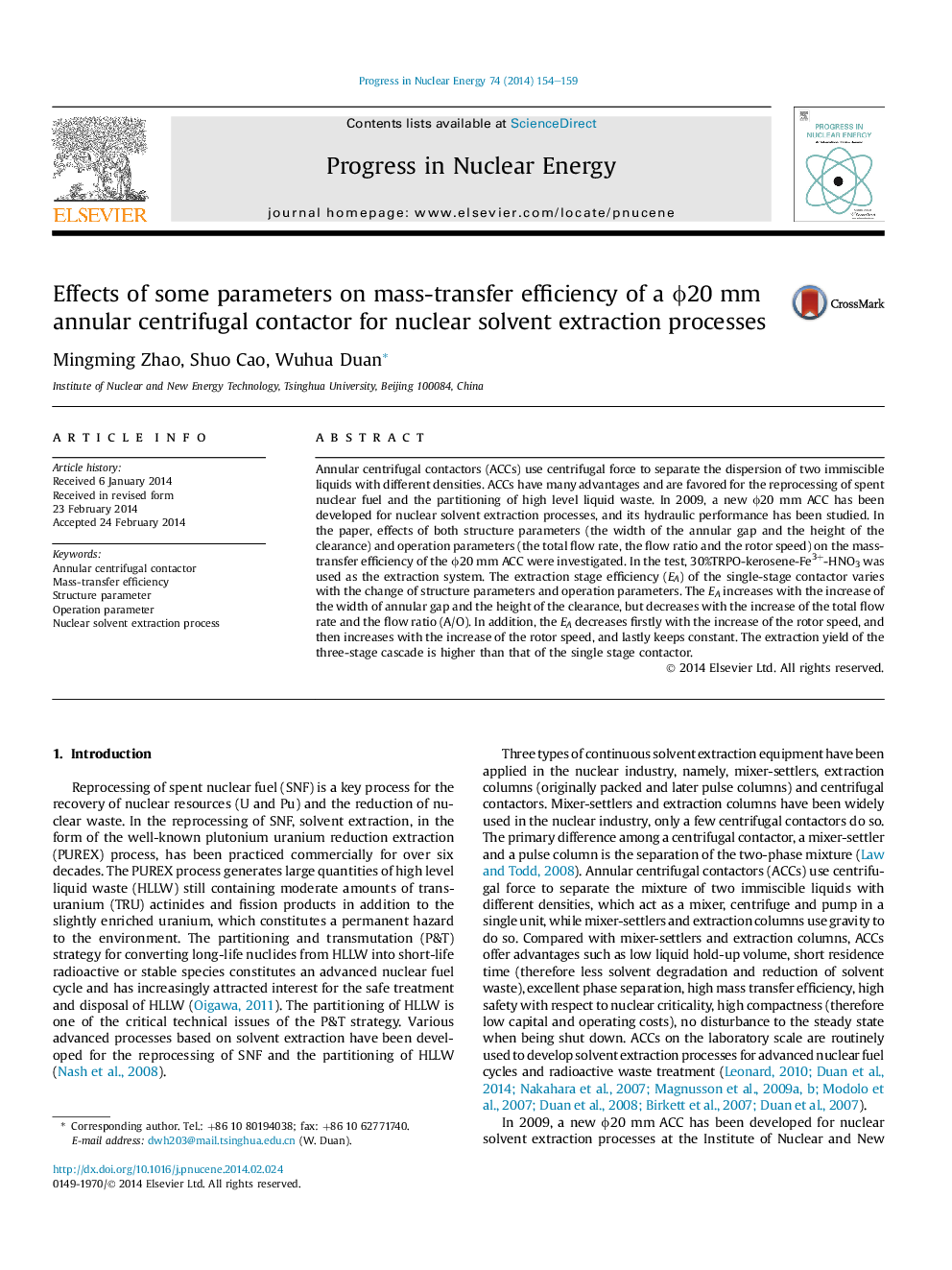| Article ID | Journal | Published Year | Pages | File Type |
|---|---|---|---|---|
| 1740521 | Progress in Nuclear Energy | 2014 | 6 Pages |
Abstract
Annular centrifugal contactors (ACCs) use centrifugal force to separate the dispersion of two immiscible liquids with different densities. ACCs have many advantages and are favored for the reprocessing of spent nuclear fuel and the partitioning of high level liquid waste. In 2009, a new Ï20Â mm ACC has been developed for nuclear solvent extraction processes, and its hydraulic performance has been studied. In the paper, effects of both structure parameters (the width of the annular gap and the height of the clearance) and operation parameters (the total flow rate, the flow ratio and the rotor speed) on the mass-transfer efficiency of the Ï20Â mm ACC were investigated. In the test, 30%TRPO-kerosene-Fe3+-HNO3 was used as the extraction system. The extraction stage efficiency (EA) of the single-stage contactor varies with the change of structure parameters and operation parameters. The EA increases with the increase of the width of annular gap and the height of the clearance, but decreases with the increase of the total flow rate and the flow ratio (A/O). In addition, the EA decreases firstly with the increase of the rotor speed, and then increases with the increase of the rotor speed, and lastly keeps constant. The extraction yield of the three-stage cascade is higher than that of the single stage contactor.
Related Topics
Physical Sciences and Engineering
Energy
Energy Engineering and Power Technology
Authors
Mingming Zhao, Shuo Cao, Wuhua Duan,
